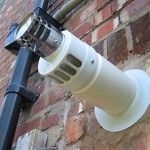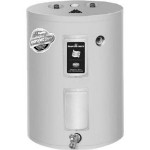How does a solar water heater work?
Sun – the most powerful source of energy for billions of years. Annual amount of solar energy is in 15 000 times over heating requirements, however only minor part has been used in solar heating system.
Solar water heater accumulates the energy transforming it into the warmth for you.

First attempts to master the energy of sun
The simplest and maybe the first solar water heater was made of shallow tank filled with water and glass lead for direct sun rays. But it was very uncomfortable because of the water change, no possibility of constant water heating. This variant was inadequate for most of people, as an alternative to common water heater. People used to get hot water immediately, without extra affords.
Furthermore, solar heater with plain pool was created, however it was acceptable only in tropical climate, where sun rises high.
The latter construction consists of oblique glass collector, insulated water tank-accumulator and heat-insulated connecting tubes. The bottom of tank-accumulator should be installed not lower than 300 millimeters from the top of collector. This construction excludes additional energy consumption for water circulation in the system. Circulation is done due to gravitational convection.
In order to guarantee hot water regular load it is preferably to install additional heater. The simplest variant is common automatic water heater to level the contrast of temperatures. If the temperature of hot water from solar heater is equal to set-point temperature the additional heater won’t automatically turn on. Regulation of such kind of system is simpler than the other ones.
The major part of solar heating systems doesn’t require additional control but for the thermostatic regulator.

Current Technologies
Solar water heater with vacuum manifold is the most effective though the most expensive type of solar heater. It consists of two parts: solar vacuum manifolds and heater exchanger. Vacuum heat transfer tube is self-inclusive and consists of double extra strong borosilicate glass. Overtube is transparent but inner tube has a special selective coating to achieve peak heat absorption and lowest reflection. To prevent heat leak between the tubes of solar heater vacuum is created. Barium gas absorber serves to sustain vacuum. Low end of vacuum tube is covered with the layer of pure barium. It occludes CO, CO2, N2, O2, H2O and H2, when the tube extracts them at operational process. It’s the exact visual indicator of vacuum in solar heater. When not in vacuum barium layer becomes from silver into white. It helps to indicate tube intactness.
Vacuum tube has a copper tube that is responsible for thermal absorption of sun energy. Copper tube is cored and stores patent-protected, inorganic nontoxic liquid. While heating process the liquid evaporates. Vacuum creates the environment the liquid to evaporate at a temperature of -25 – 30?C. At the stub of heating tube vapor gives up heat to nonfreezing agent, flowing in the heat line of solar heater. Vapor condensates, drops down and the process repeats.
Solar heater with vacuum tubes shows good results even in bad weather, as vacuum tubes tend to absorb infrared rays energy, going through the clouds. Due to the insulating vacuum qualities influence of the wind and low temperatures is minor.
Vacuum tubes are round that helps to preserve the even amount of sun energy all day long. That’s why solar vacuum heater has better results in absorbing general amount of solar energy compared to flat-plate solar collector. Shape of tubes in solar heating system ensures high-level absorption whereas the ray path is always direct and ray reflection reduces to a minimum. Solar water heater has concurrent tubes and its oblique angle depend on geographic latitude of installation. Directing from north to south, vacuum solar heater tubes track the sun. Vacuum solar heater doesn’t require constant maintenance service. Replacement of tubes can be done without solar heater turning off. In case of necessity vacuum tubes can be added or removed varying work area.
Hot water demand is constant throughout the year so the solar water heater can work full load maximum length of time.
- popular
- new






